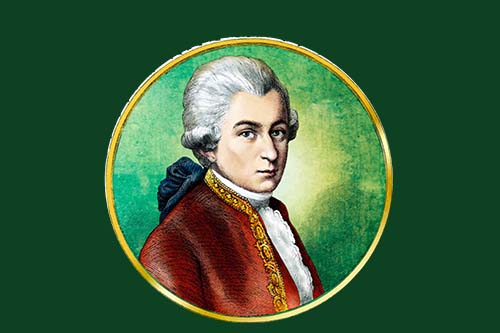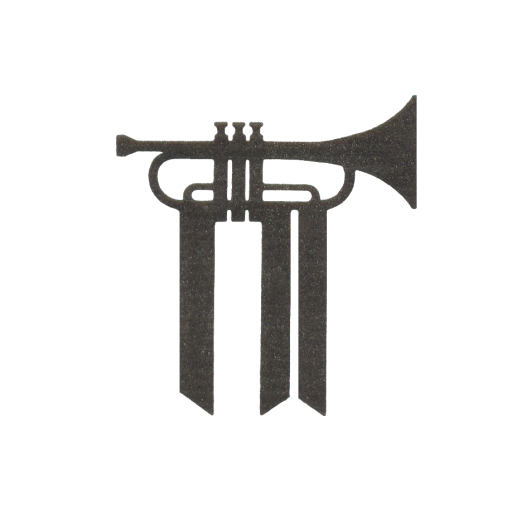MOZART
Listen
This month we feature Mozart – the first recording is that of Eine kleine Nachtmusik – ever cheerful. The second is the more ominous Requiem. The third is that of the Alla turca on piano. The fourth is a recording of his 40th Symphony.
Eine kleine Nachtmusik (Serenade No. 13 for strings in G major), K. 525, is a 1787 composition for a chamber ensemble by Wolfgang Amadeus Mozart. The German title means “a little serenade”, though it is often rendered more literally as “a little night music”. The work is written for an ensemble of two violins, viola, cello and double bass, but is often performed by string orchestras.
The serenade was completed in Vienna on 10 August 1787, around the time Mozart was working on the second act of his opera Don Giovanni. It is not known why it was composed. Wolfgang Hildesheimer, noting that most of Mozart’s serenades were written on commission, suggests that this serenade, too, was a commission, whose origin and first performance were not recorded.
The traditionally used name of the work comes from the entry Mozart made for it in his personal catalog, which begins, “Eine kleine Nacht-Musik”. As Zaslaw and Cowdery point out, Mozart almost certainly was not giving the piece a special title, but only entering in his records that he had completed a little serenade.
The work was not published until about 1827, long after Mozart’s death, by Johann André in Offenbach am Main. It had been sold to this publisher in 1799 by Mozart’s widow Constanze, part of a large bundle of her husband’s compositions.
Today, the serenade is widely performed and recorded; indeed, both Jacobson and Hildesheimer opine that the serenade is the most popular of all Mozart’s works. Of the music, Hildesheimer writes, “even if we hear it on every street corner, its high quality is undisputed, an occasional piece from a light but happy pen.”
The Requiem in D minor, K. 626, is a requiem mass by Wolfgang Amadeus Mozart (1756–1791). Mozart composed part of the Requiem in Vienna in late 1791, but it was unfinished at his death on 5 December the same year. A completed version dated 1792 by Franz Xaver Süssmayr was delivered to Count Franz von Walsegg, who commissioned the piece for a requiem service to commemorate the anniversary of his wife’s death on 14 February.
The autograph manuscript shows the finished and orchestrated Introit in Mozart’s hand, and detailed drafts of the Kyrie and the sequence Dies irae as far as the first eight bars of the Lacrymosa movement, and the Offertory. It cannot be shown to what extent Süssmayr may have depended on now lost “scraps of paper” for the remainder; he later claimed the Sanctus and Benedictus and the Agnus Dei as his own.
Walsegg probably intended to pass the Requiem off as his own composition, as he is known to have done with other works. This plan was frustrated by a public benefit performance for Mozart’s widow Constanze. She was responsible for a number of stories surrounding the composition of the work, including the claims that Mozart received the commission from a mysterious messenger who did not reveal the commissioner’s identity, and that Mozart came to believe that he was writing the requiem for his own funeral.
In addition to the Süssmayr version, a number of alternative completions have been developed by musicologists in the 20th century.
The Piano Sonata No. 11 in A major, K. 331 / 300i, by Wolfgang Amadeus Mozart is a piano sonata in three movements. Mozart likely composed the sonata while in Vienna or Salzburg by around 1783, although Paris and dates as far back as 1778 have also been suggested. Mozart himself titled the rondo “Alla turca”. It imitates the sound of Turkish Janissary bands, the music of which was much in vogue at that time.
Various other works of the time imitate this Turkish style, including Mozart’s own opera Die Entführung aus dem Serail. In Mozart’s time, the last movement was sometimes performed on pianos built with a “Turkish stop”, allowing it to be embellished with extra percussion effects.
Symphony No. 40 in G minor, K. 550 was written by Wolfgang Amadeus Mozart in 1788. It is sometimes referred to as the “Great G minor symphony”, to distinguish it from the “Little G minor symphony”, No. 25. The two are the only extant minor key symphonies Mozart wrote.
The date of completion of this symphony is known exactly since Mozart in his mature years kept a full catalog of his completed works; he entered the 40th Symphony into it on 25 July 1788. Work on the symphony occupied an exceptionally productive period of just a few weeks during which time he also completed the 39th and 41st symphonies (26 June and 10 August, respectively). Nikolaus Harnoncourt conjectured that Mozart composed the three symphonies as a unified work, pointing, among other things, to the fact that the Symphony No. 40, as the middle work, has no introduction (unlike No. 39) and does not have a finale of the scale of No. 41’s.
The 40th symphony exists in two versions, differing primarily in that one includes parts for a pair of clarinets (with suitable adjustments made in the other wind parts). Most likely, the clarinet parts were added in a revised version. The autograph scores of both versions were acquired in the 1860s by Johannes Brahms, who later donated the manuscripts to the Gesellschaft der Musikfreunde in Vienna, where they reside today.



